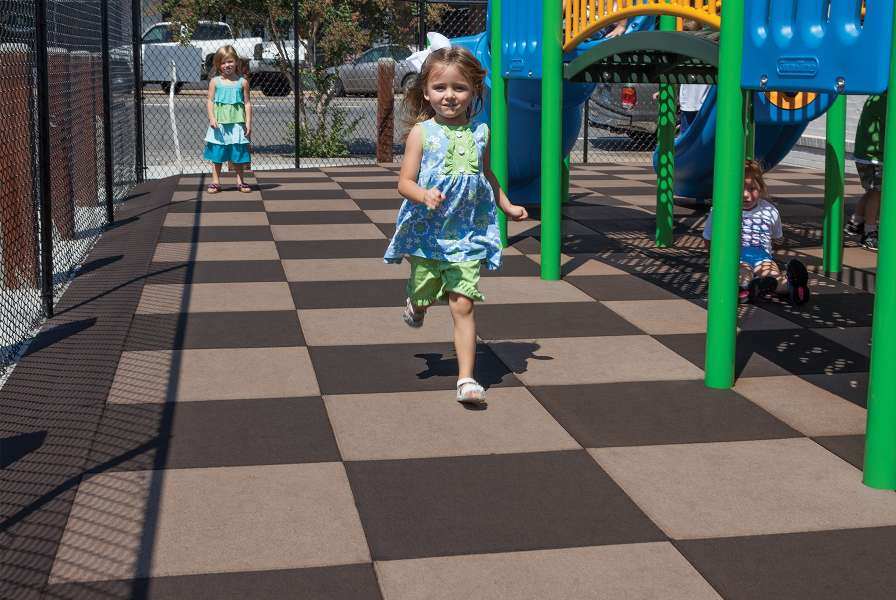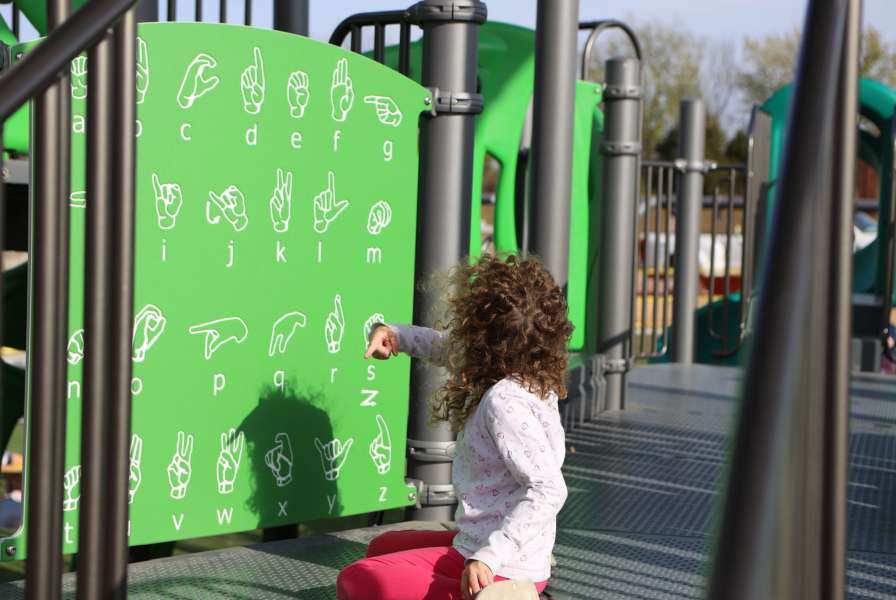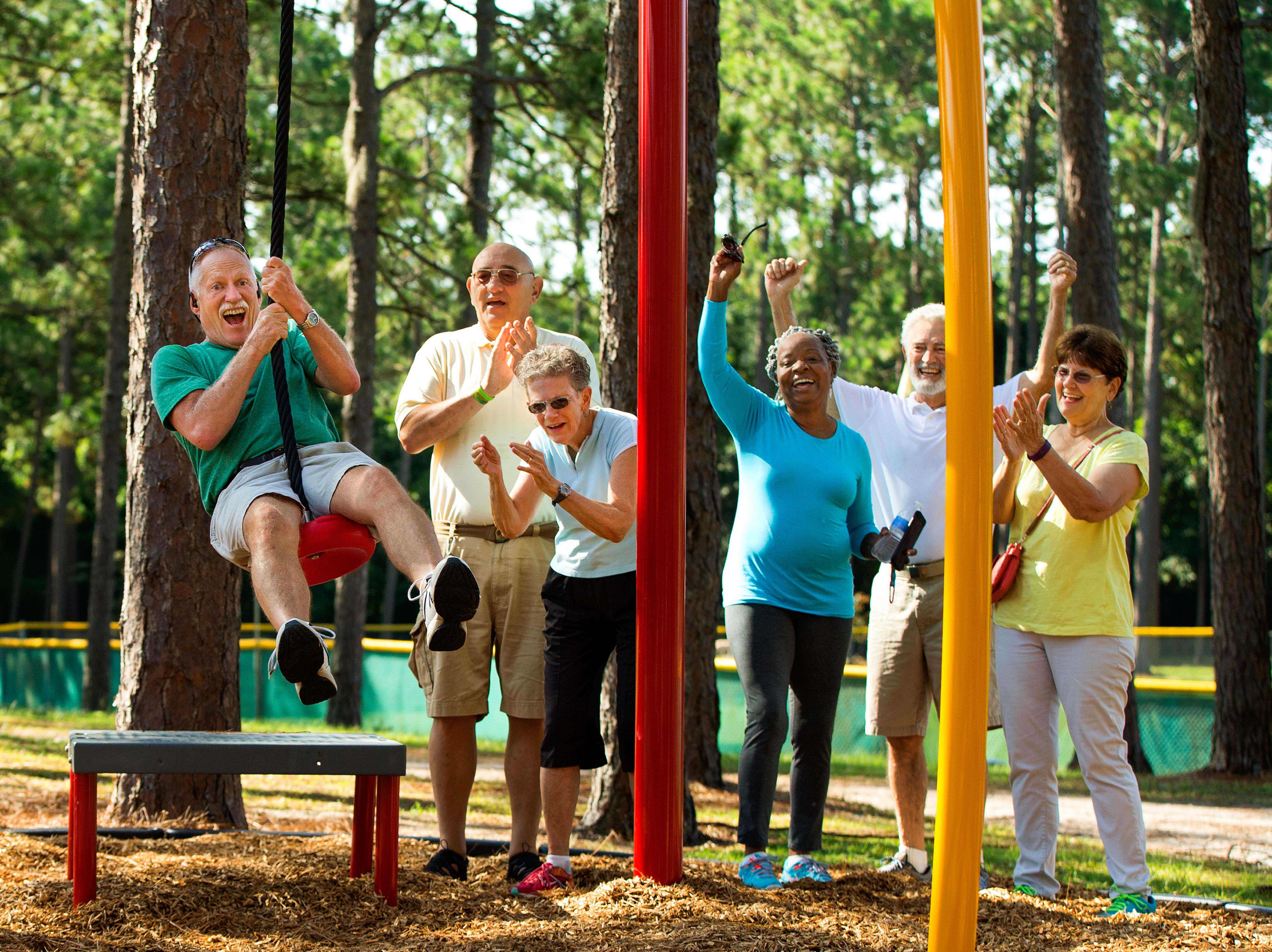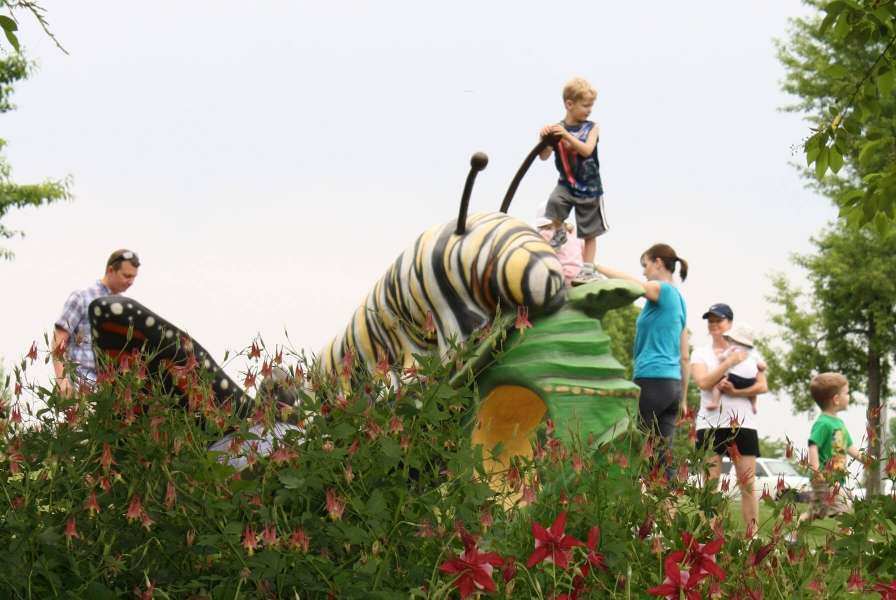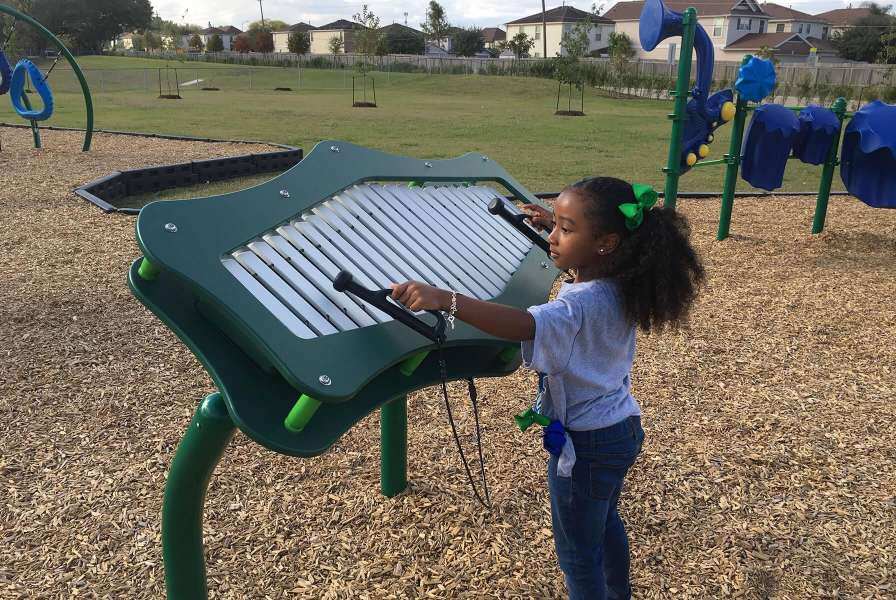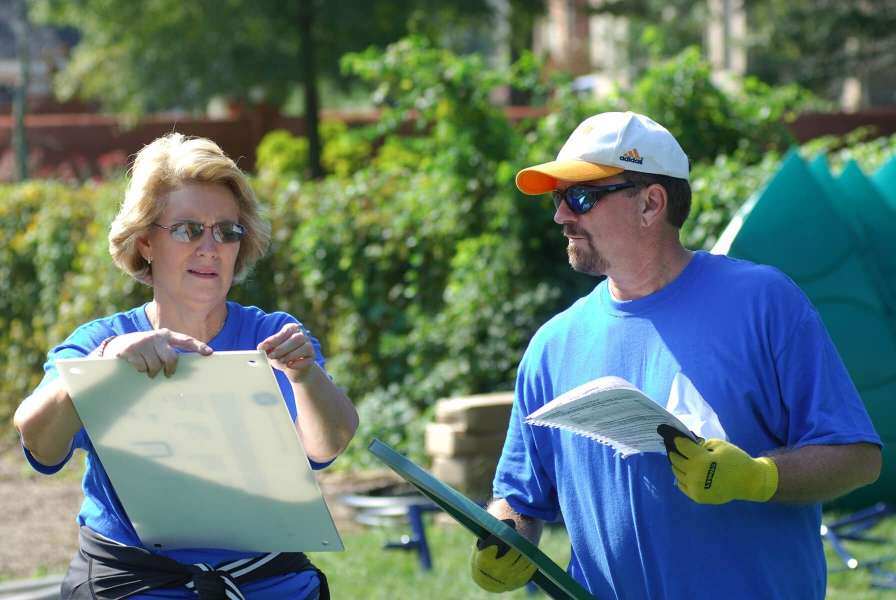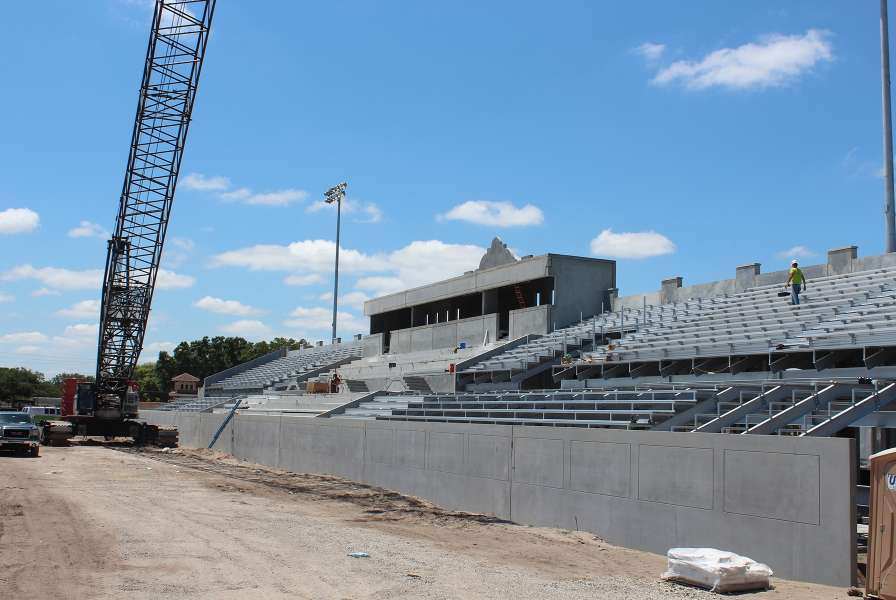All surfaces must be maintained to remain compliant and to help extend the functional life of the product. Even under the warranty period, there are care guidelines for each type of surfacing that should be carefully managed.
Loose-fill Material
General Inspection
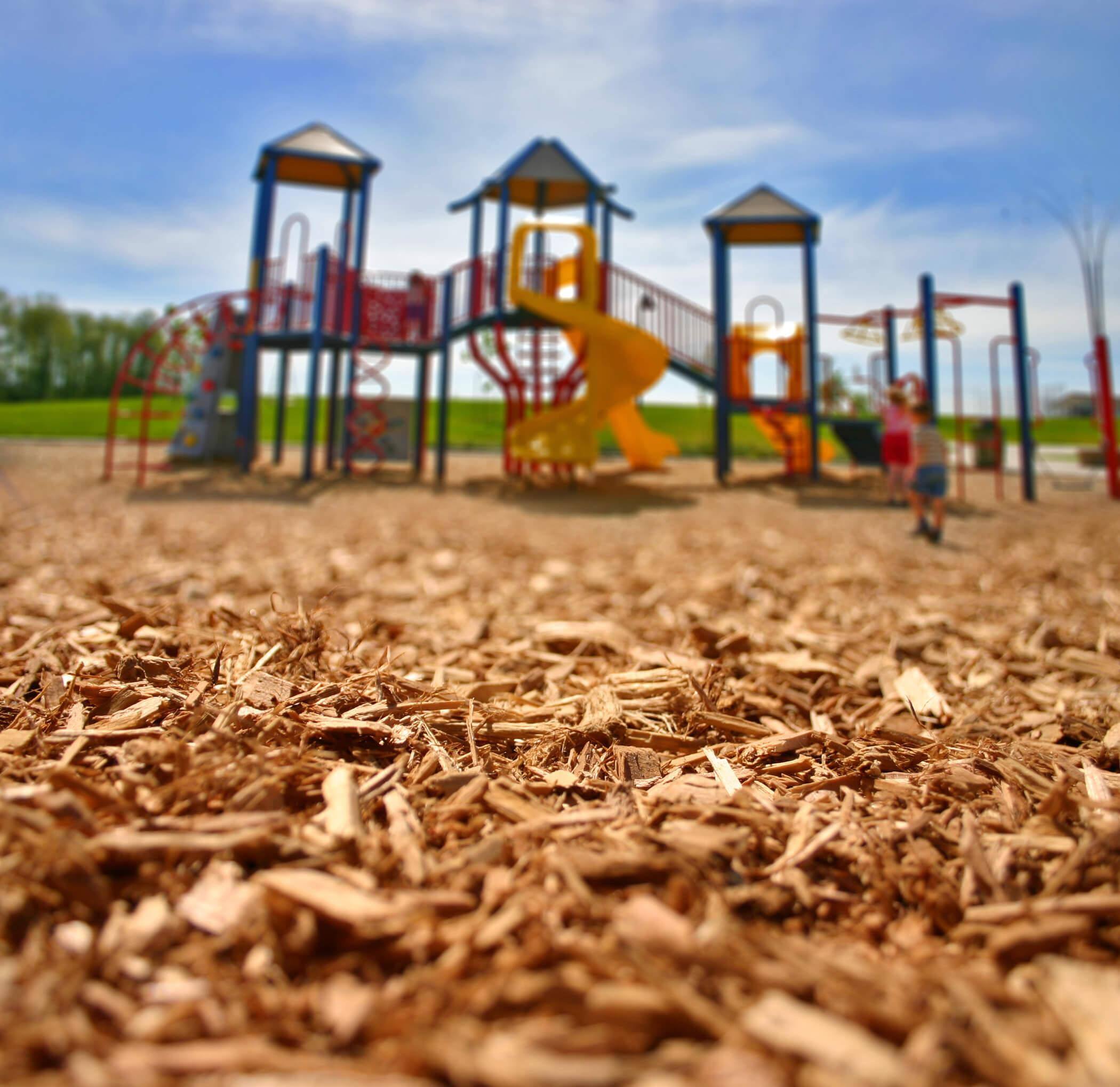 Check to see if the surfacing is loosely packed and covering all appropriate areas, especially fall zones surrounding the equipment, to ensure the surface is compliant with standards. Ensure that the surface is level, at the proper depth to attenuate falls from the equipment, and that all containment curbs are firmly in place. Visually inspect areas under slides, swings, and other concentrated areas that may need a top-off of materials in order to retain the proper critical fall depths and maintain accessibility.
Check to see if the surfacing is loosely packed and covering all appropriate areas, especially fall zones surrounding the equipment, to ensure the surface is compliant with standards. Ensure that the surface is level, at the proper depth to attenuate falls from the equipment, and that all containment curbs are firmly in place. Visually inspect areas under slides, swings, and other concentrated areas that may need a top-off of materials in order to retain the proper critical fall depths and maintain accessibility.
Heavy Use Areas
During routine inspections, regular raking of material is required under slides, swings, certain fitness equipment, and other concentrated use zones, landing zones, or where foot dragging is common. Raking alone may not ensure the area is compliant, so top-off materials may be necessary in order to maintain the proper depths for fall attenuation and accessibility. Placement of wear mats in heavy use areas can help reduce displacement.
Winter Weather
If the surface material retains moisture, it will freeze at temperatures below 32°F (0°C). The surface should be checked when the temperature falls below freezing, as this may affect fall attenuation properties.
Top-Offs
To maintain the surface at the recommended depth, comply with warranties, and help ensure accessibility, you will need to top-off the area as necessary. When the surface compacts, decomposes, or is displaced enough to reduce the original depth, contact your supplier to order additional material. Failure to maintain surfacing at the initial installation depth may result in an injury and/or void your manufacturer’s warranty.
Cleaning and Foreign Objects
Rake the play or recreational area level. During routine inspection, remove any foreign objects such as glass, rocks, and litter and discard these materials.
Unitary Surfaces Materials
Poured-In-Place Maintenance
General Inspection
Inspect the surfacing to ensure no cracks, punctures, or other damage has occurred that will require repair. Look for general wear-and-tear, paying close attention to high impact areas. Damaged areas should be patched by a certified installation crew to the same standards of the original installation. Look for flaking of the wear layer, which may indicate service is needed to ensure proper product performance. Look for foreign materials, which can be blown off or picked up, and inspect the surface for stains that may need to be cleaned.
Heavy Use Areas
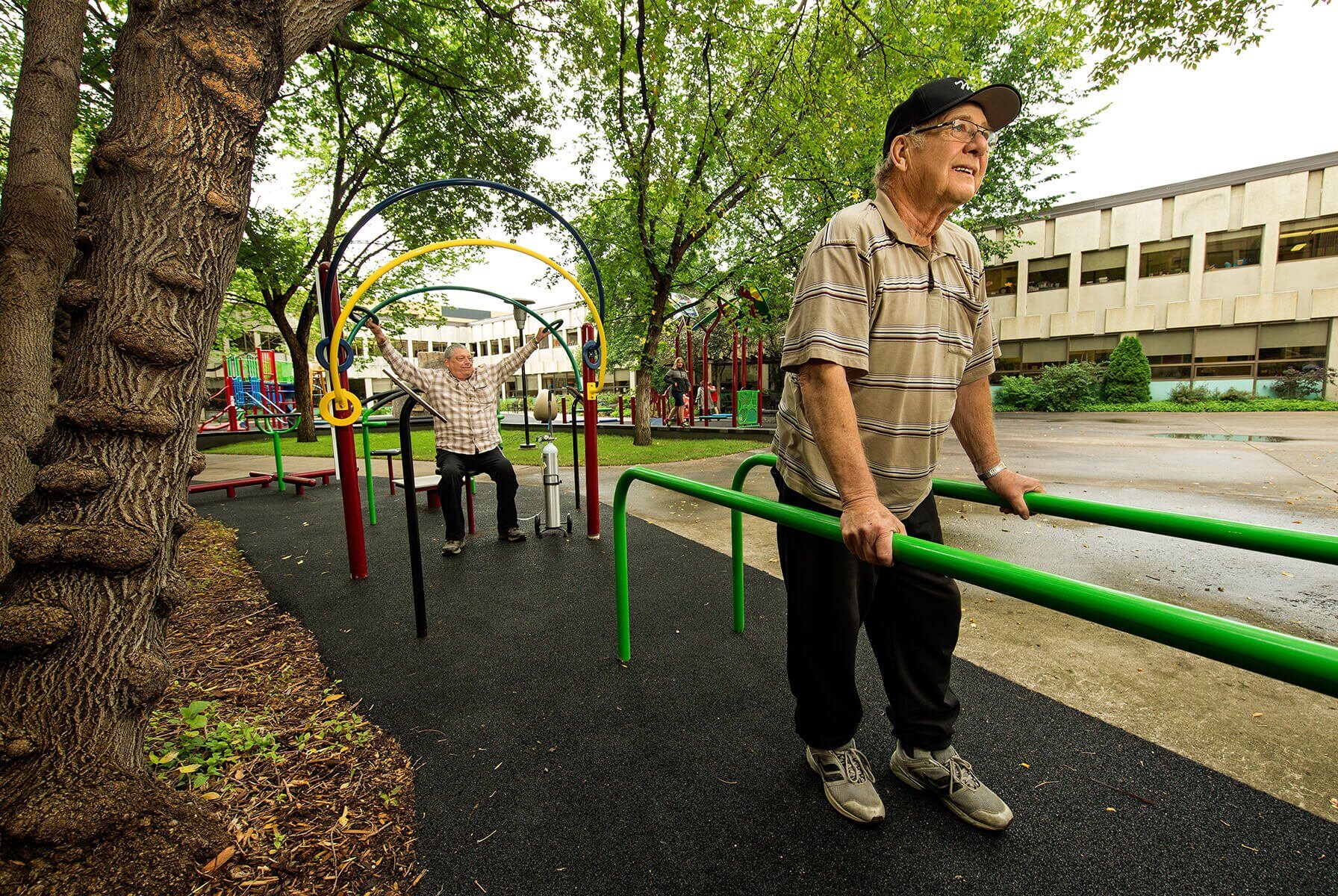 Heavy use areas may wear faster and require roll or spray coating to prevent flaking. Inspect heavy use areas like under swings, spinning devices and at the base of slides, and contact your supplier if you have questions about the surfacing’s condition. For stains and dirt in heavy use areas, refer to cleaning recommendations that are specific to the product.
Heavy use areas may wear faster and require roll or spray coating to prevent flaking. Inspect heavy use areas like under swings, spinning devices and at the base of slides, and contact your supplier if you have questions about the surfacing’s condition. For stains and dirt in heavy use areas, refer to cleaning recommendations that are specific to the product.
Foreign Objects
Use a blower or vacuum to remove loose debris. For outdoor applications, hose off the entire playground or recreational surface to remove dirt and debris as needed.
Roll or Spray Coatings
Poured-in-place surfacing requires regular roll or spray coating to help promote it vibrancy and longevity. This procedure consists of rolling a thin layer of the same urethane binder used in installation over the entire playground surface. Roll or spray coating should be conducted every 12 to 24 months depending on use, weather conditions, and other factors. Contact your manufacturer or sales representative to help understand the recommended frequency of roll or spray coating for your project.
Cleaning
Regularly remove loose debris such as sand, dirt, and small stones to help reduce slip hazards. Fine particles can also accumulate in the porous openings and clog drainage. To achieve best results, use a vacuum or blower to clear the surface as well as to remove litter. Sweeping or scrubbing will remove litter but may force fine particles into the porous surfacing.
On heavily stained isolated spots, while the surface is damp from hosing, apply a sufficient amount of a mild household or commercial detergent. For adequate coverage, use a hand-held spray bottle to apply, then scrub thoroughly with a soft bristle scrub brush. Repeat as necessary on extremely tough stains. It’s best to work in 4’x4’ areas. These cleaning procedures provide no guarantee of stain removal. However, a stain may become more difficult or even impossible to remove if not addressed immediately. For difficult stains, refer to the specific maintenance guide provided by the manufacturer. Do not use any steaming or hot water machines for cleaning as this may cause delamination of the surface.
Tile Maintenance
General Inspection
Hose off entire play or recreational surface to remove dirt, loose debris or any other foreign elements. This can be part of a monthly routine maintenance program. A pressure washer may be used provided the water pressure does not exceed 1,500 psi and the spray nozzle should not be closer than 12 inches to the surface. This type of maintenance should be done only on an as-needed basis. On heavily stained isolated spots, while surface is damp from hosing, apply a sufficient amount of a mild household or commercial detergent. For adequate coverage, use a mild household or commercial detergent. For adequate coverage, use a hand-held spray bottle, scrub thoroughly with a 10-inch medium basin bristle scrub and repeat as necessary on extremely tough stains.
Synthetic Grass
General Inspection
Basic precautions and care will ensure that the synthetic grass will maintain its appearance and performance for many years. Proper maintenance can do a lot to protect the investment for future use. It is suggested that maintenance professionals brush the surface monthly, using a power broom or a push broom. The operator should sweep against the fibers to stand the blades of turf. As needed, top-off infill to fill in low spots. Keep surface free of leaves, grass clippings, or other debris. A leaf blower works well to help keep the surface clean.

